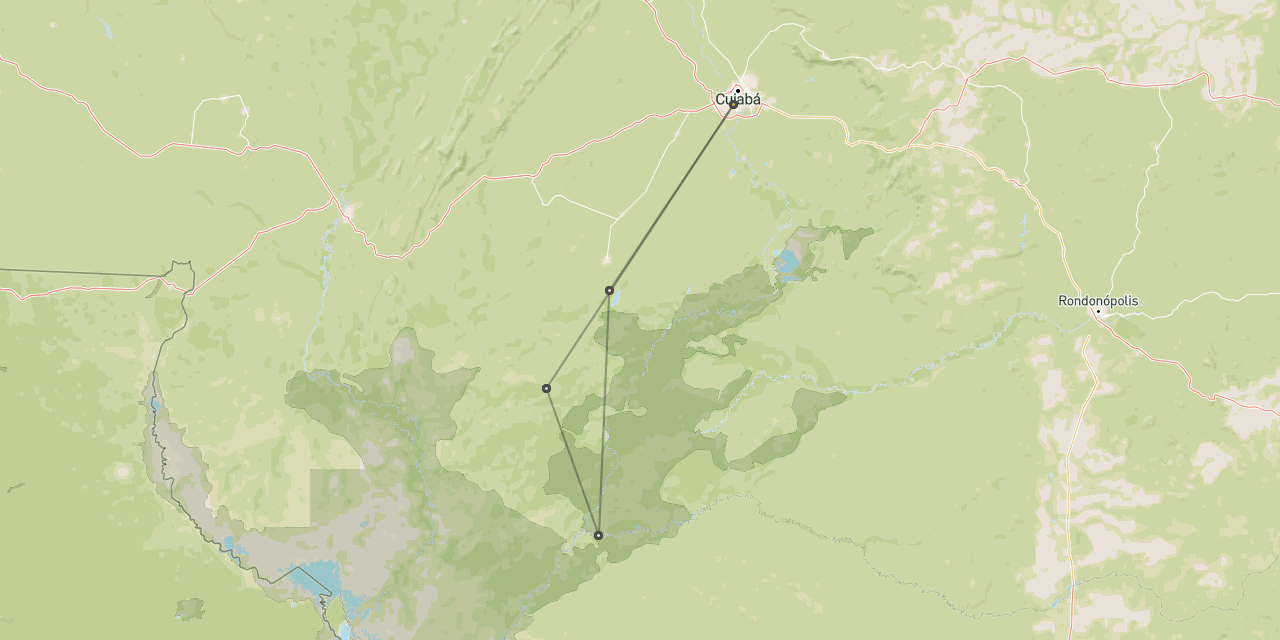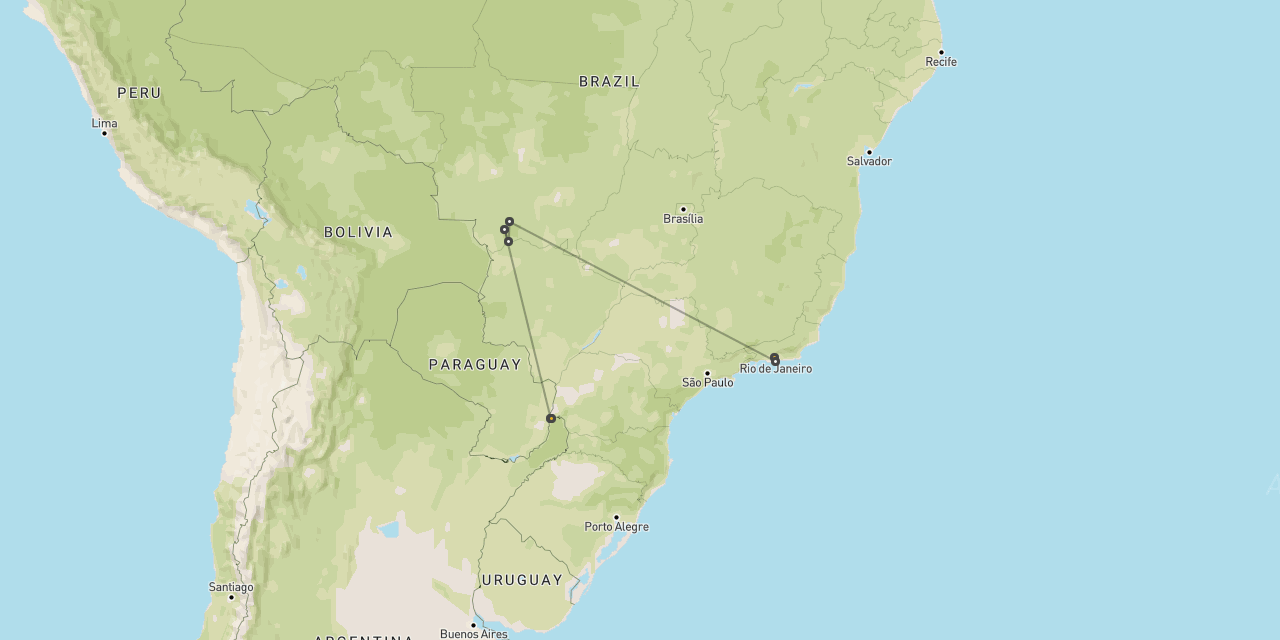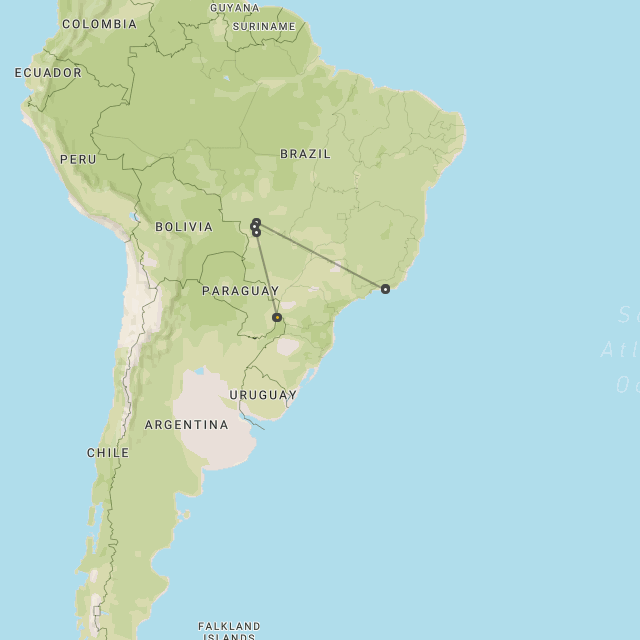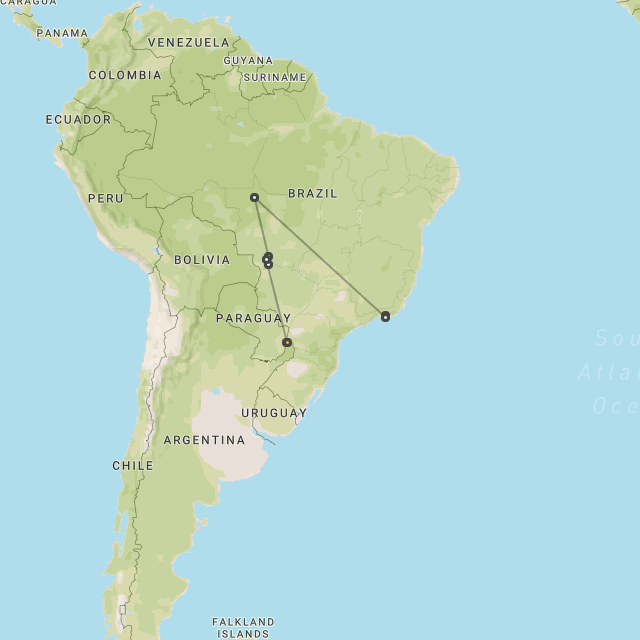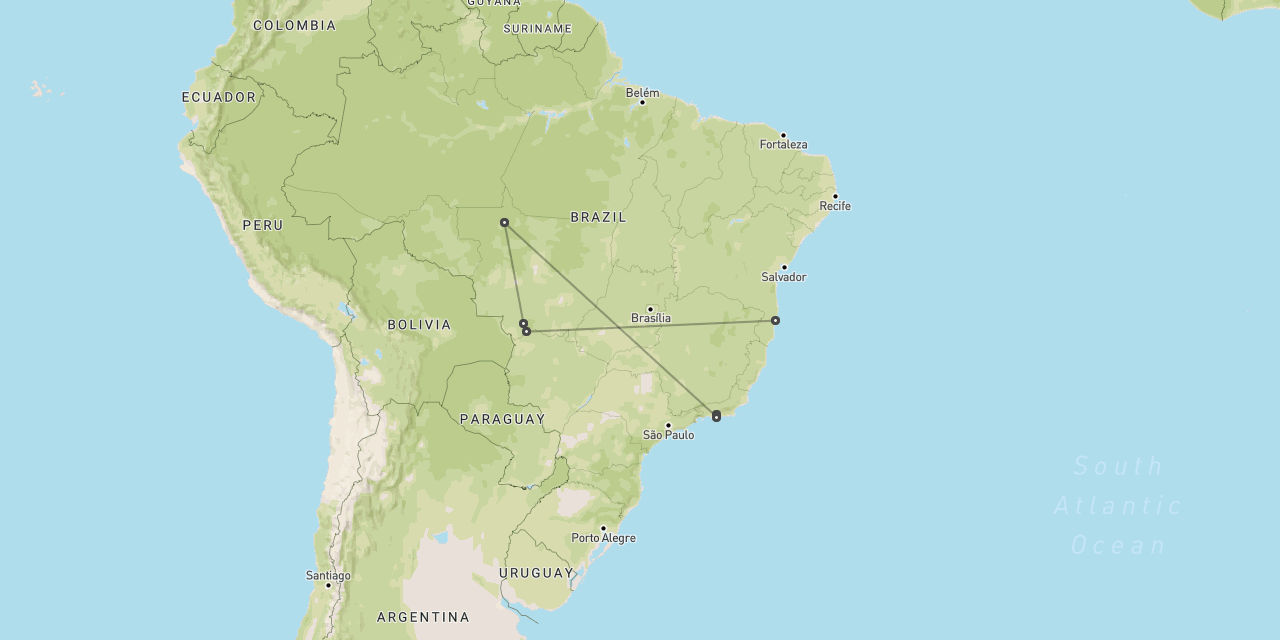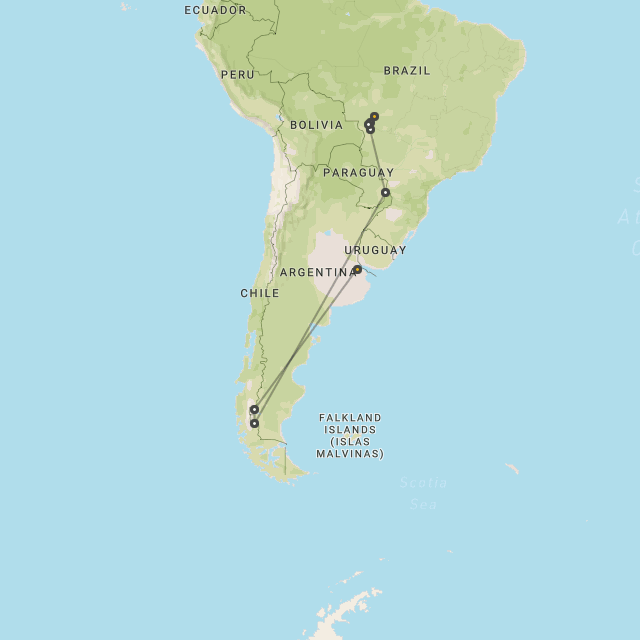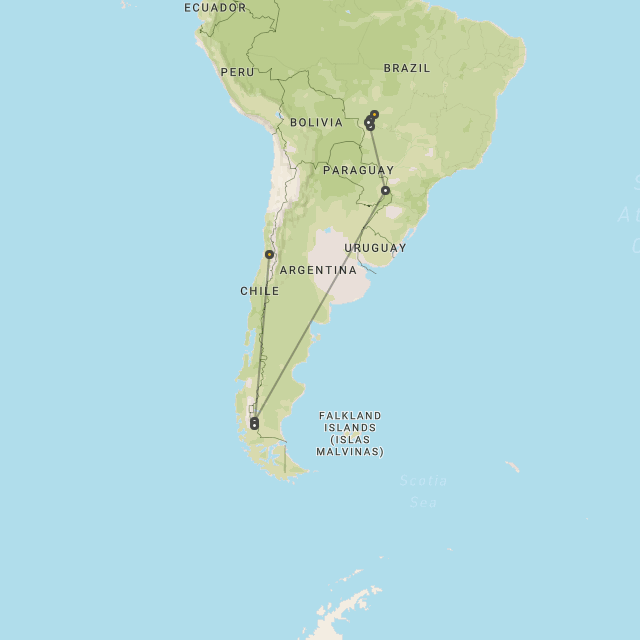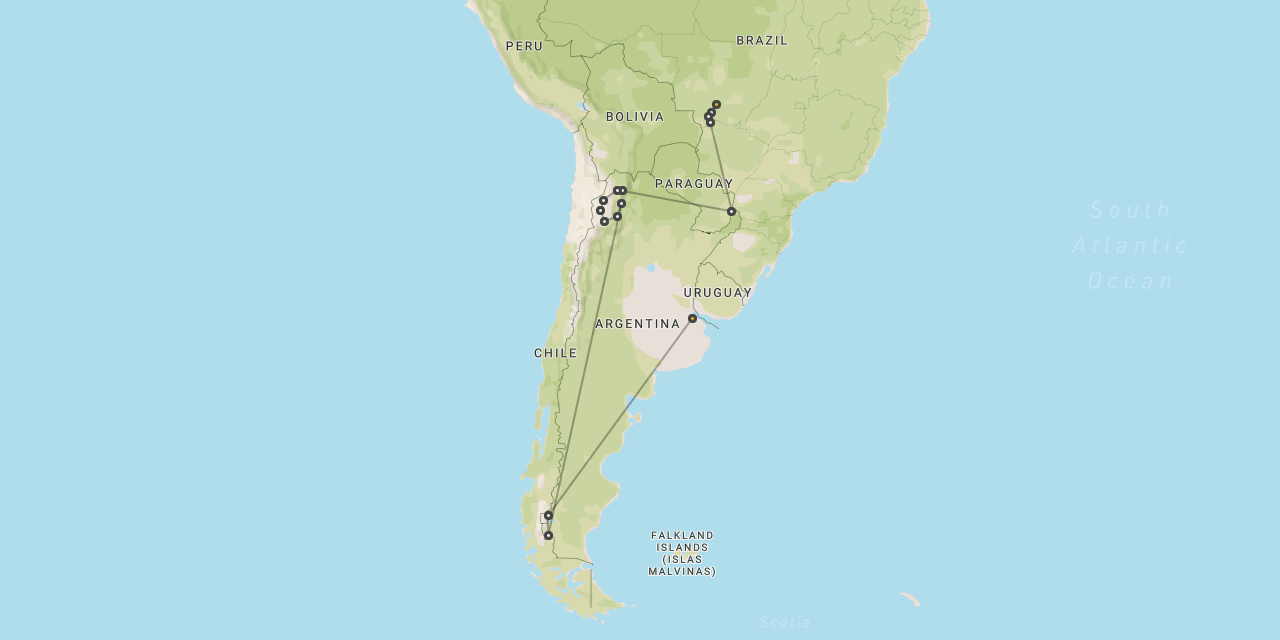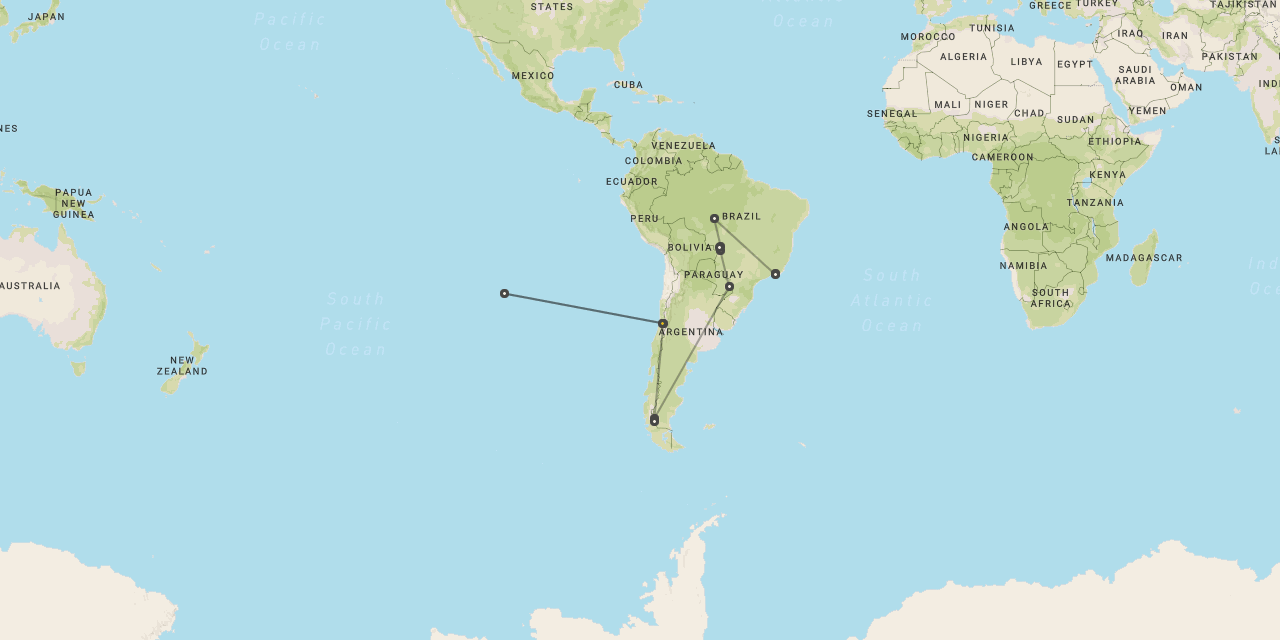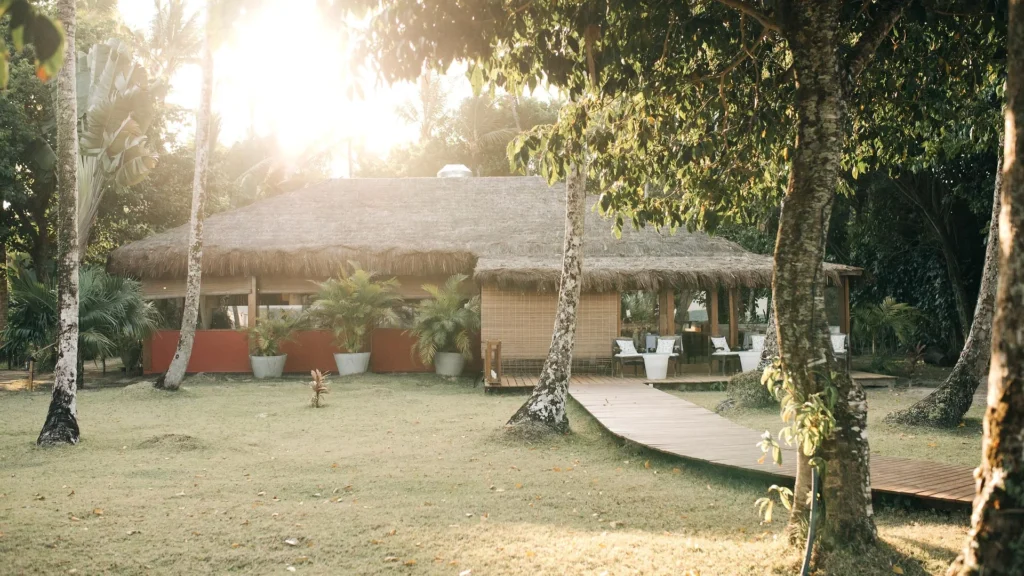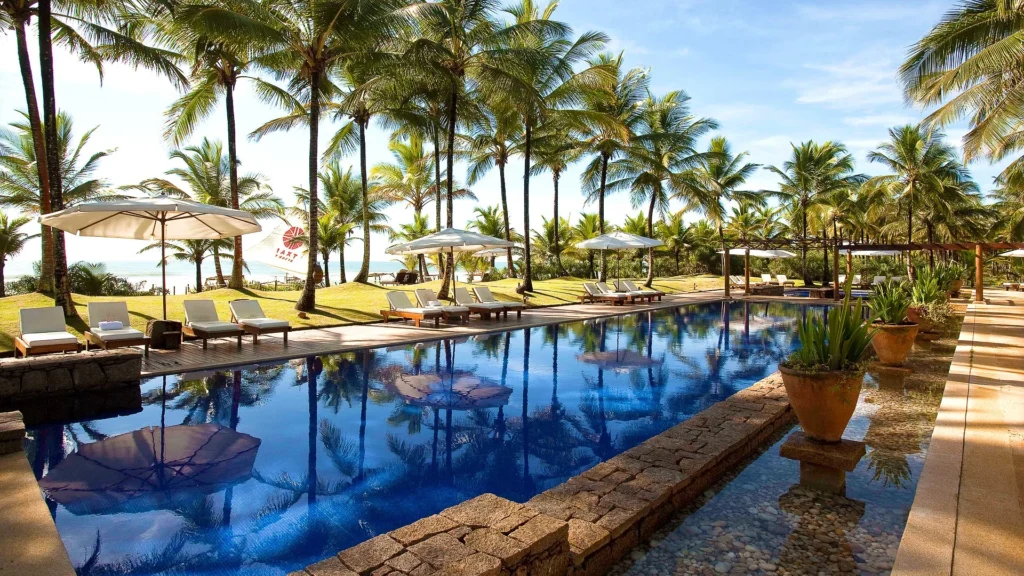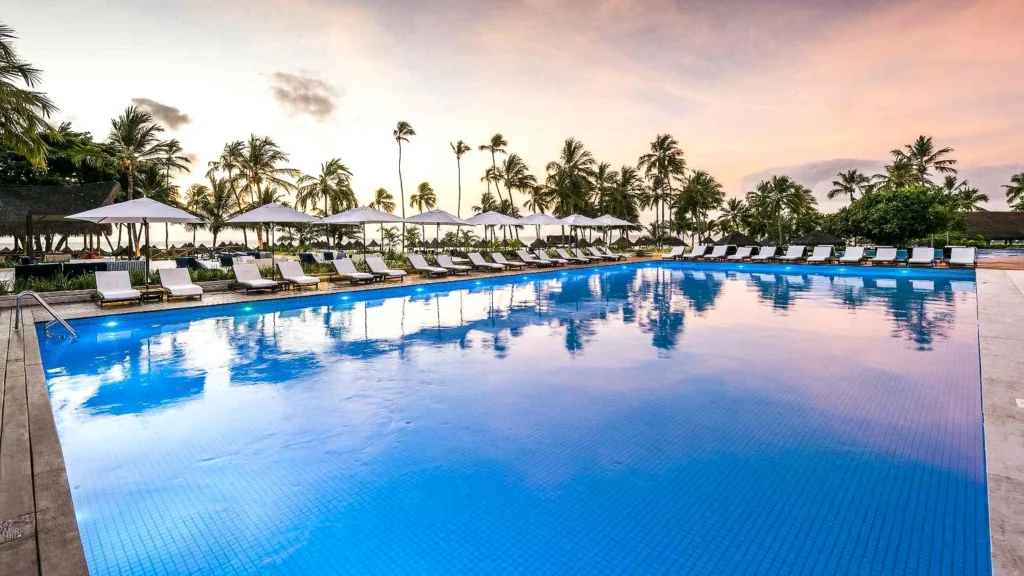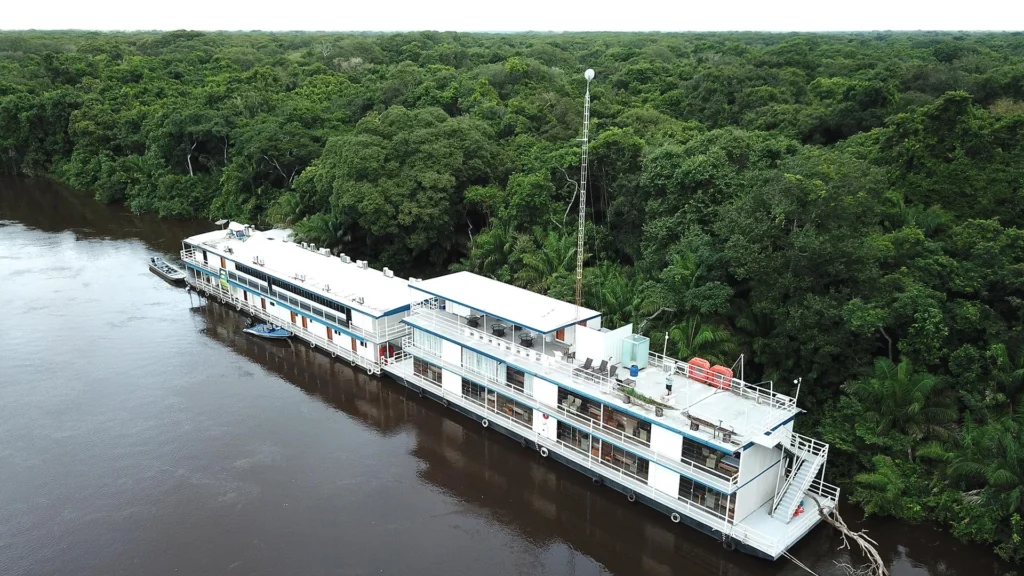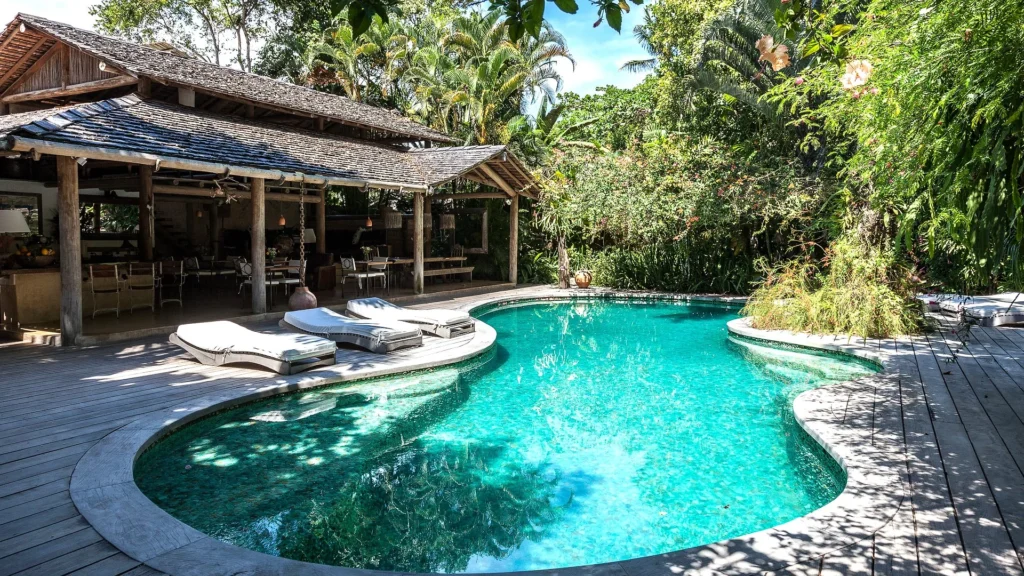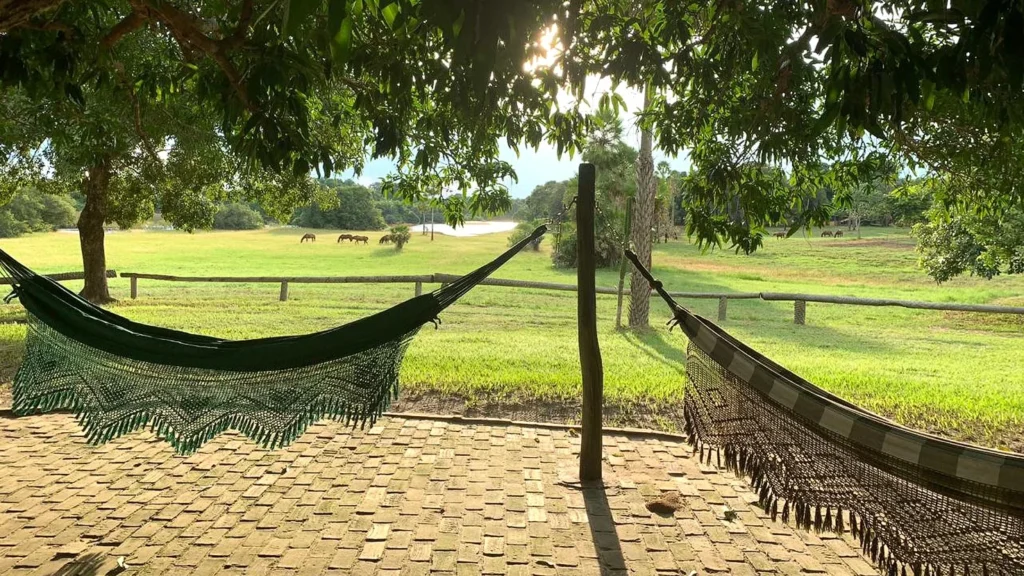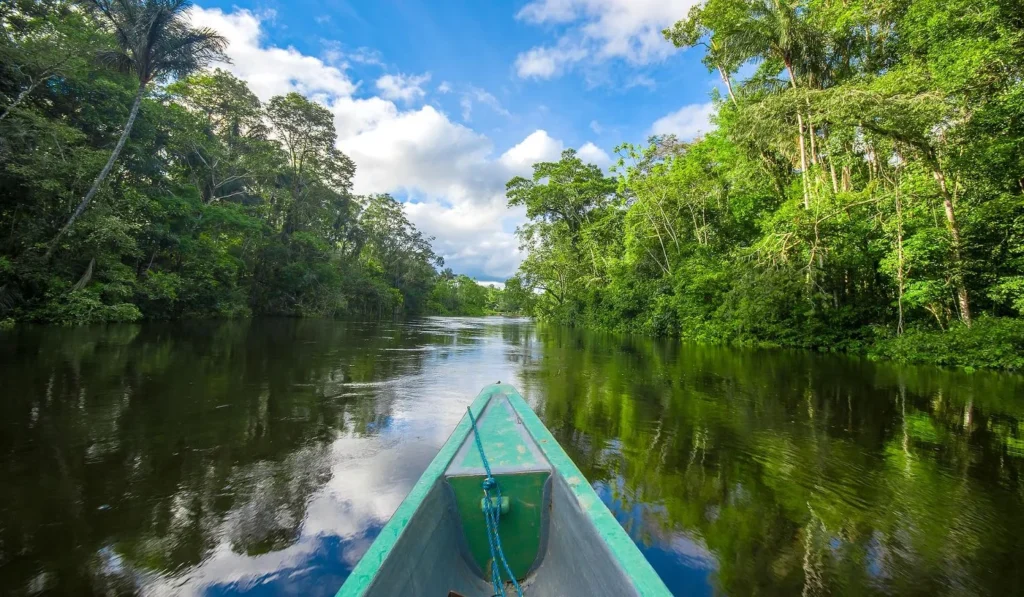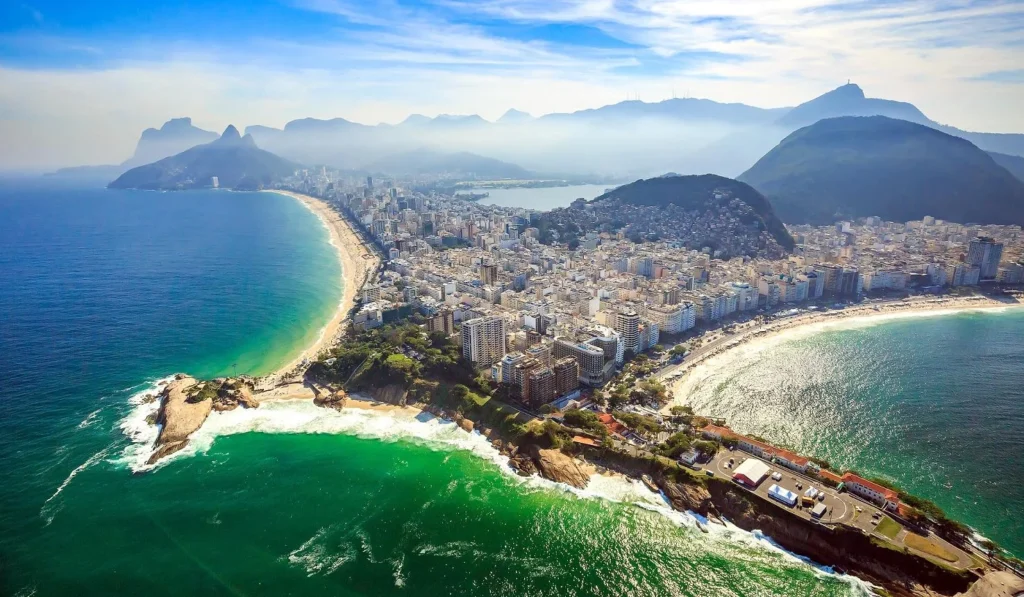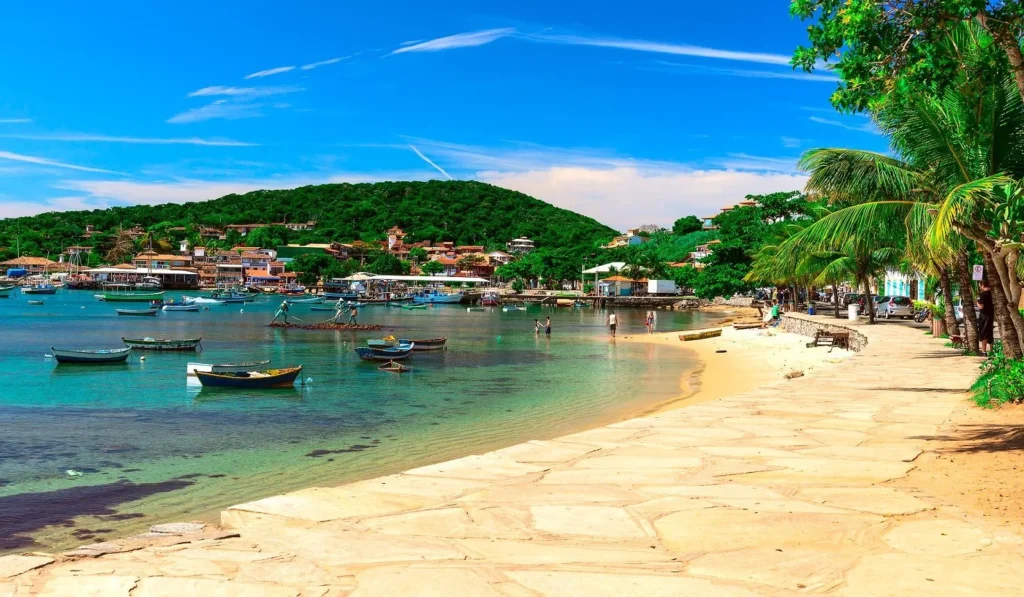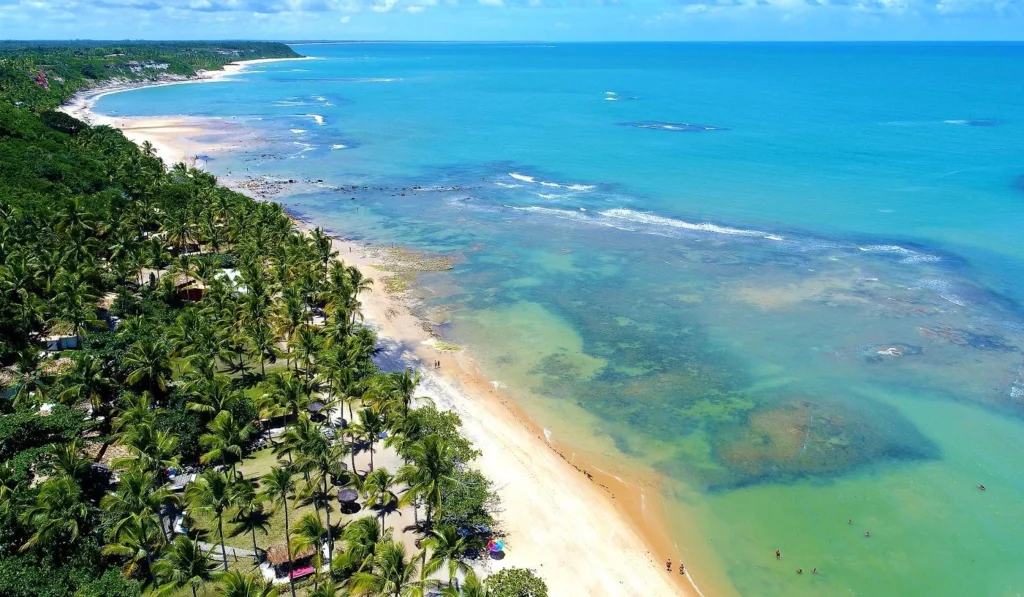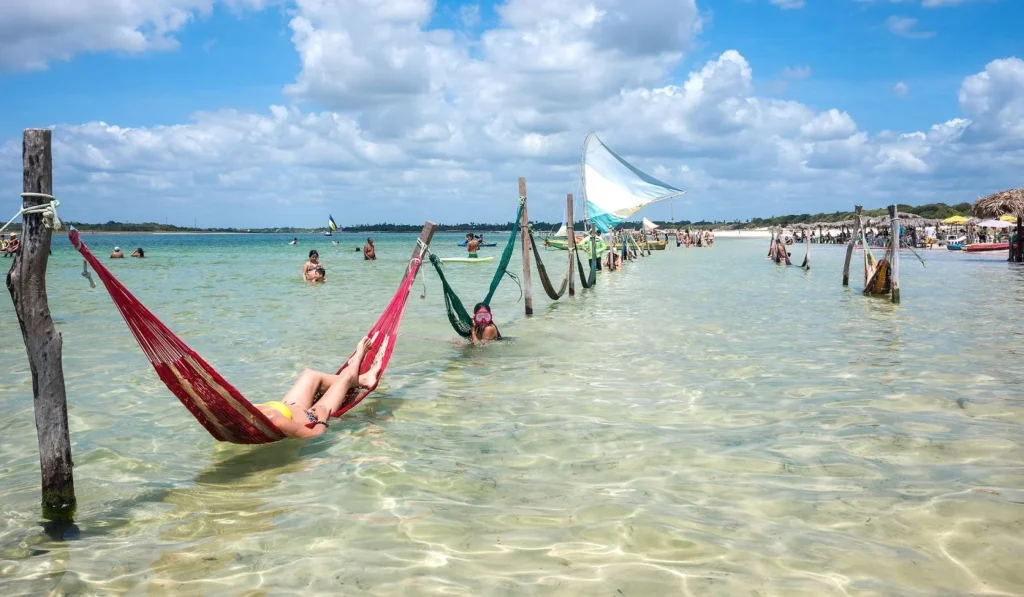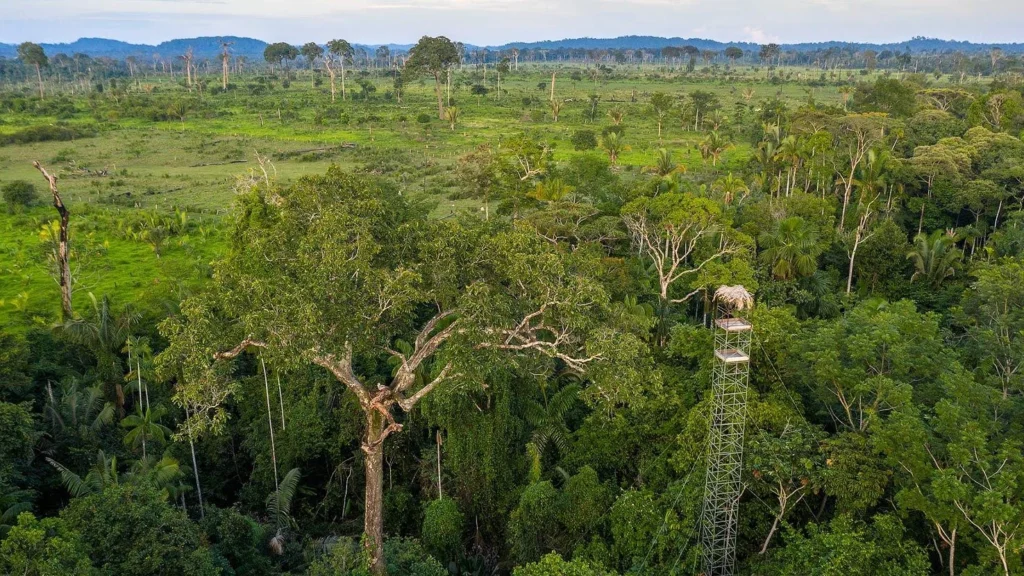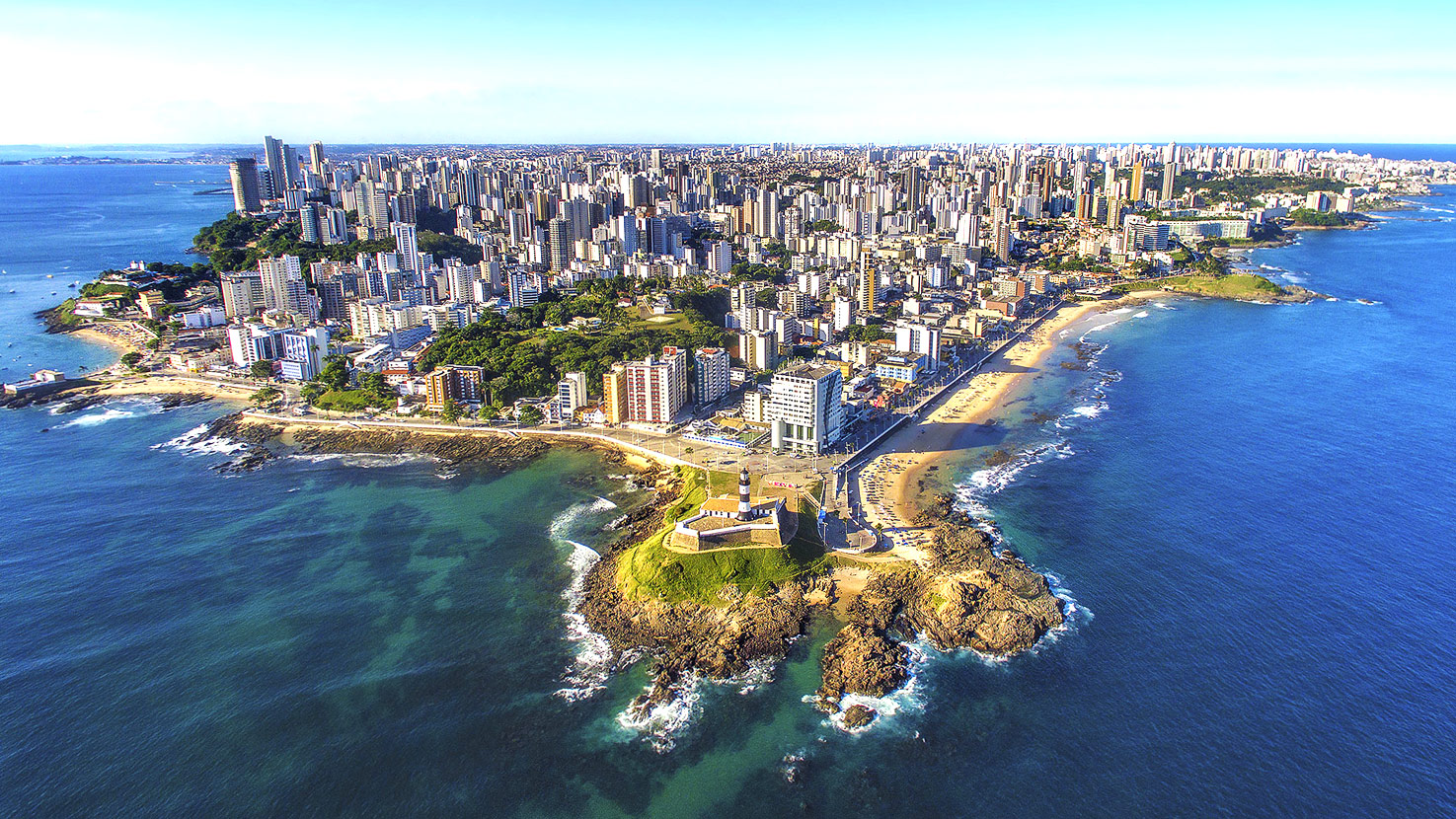
Travel to Salvador
Salvador
is an historic port city
on the tropical coast of Brazil
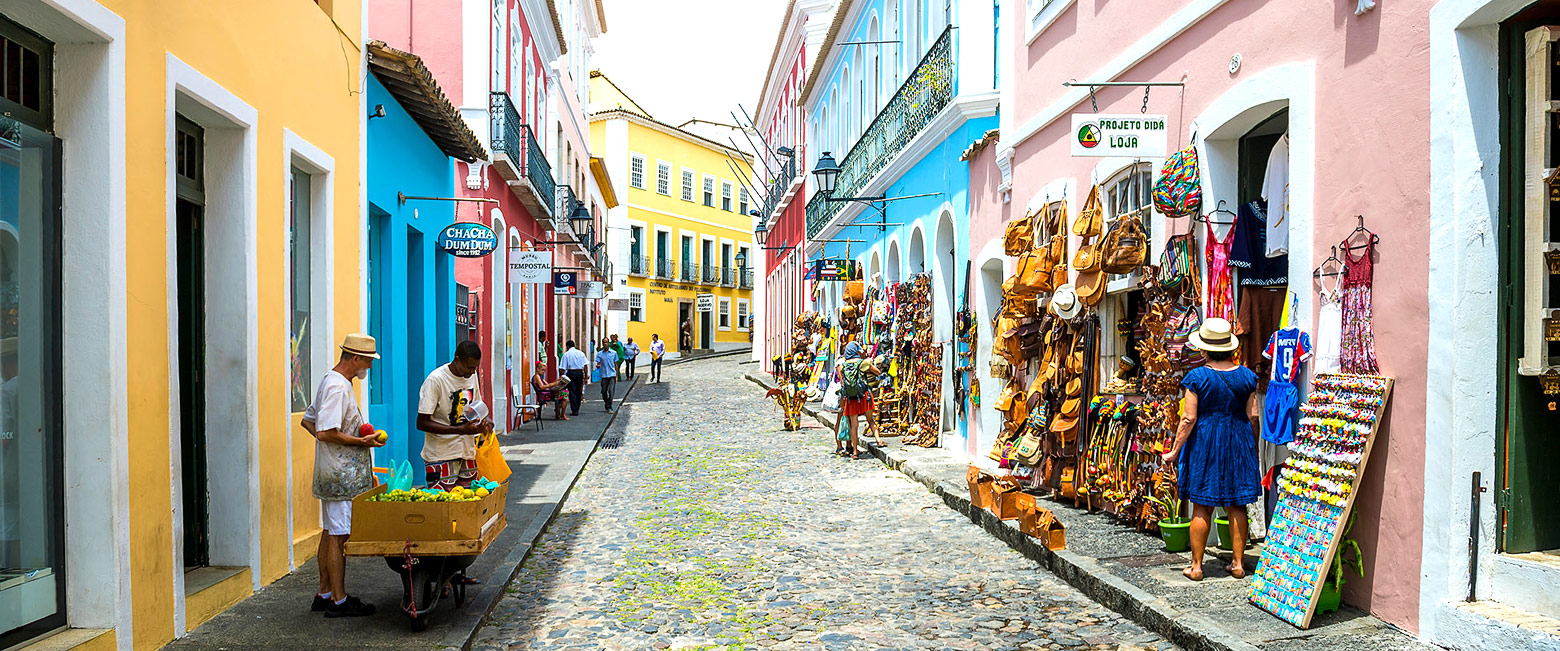
an historic centre for sugarcane production
Set some 1200 km (720 miles) north of Rio de Janeiro, the Bahia Coast is a stretch of impressive tropical beaches, centred on the historic city of Salvador.
Salvador City
Salvador is the bustling and vibrant former capital of Brazil, a hectic and entrancing place, which is a major epicentre for Afro-American culture.
The area around the Baía de Todos os Santos was first visited by the Portuguese in 1501, with Amerigo Vespucci himself (after whom the continent was named) visiting a year later. The city itself was established in 1549 and quickly became a major hub for the sugarcane industry and the associated importation of slaves from Africa.
Salvador suffered a significant loss of status in 1763 when the capital was removed to Rio de Janeiro. During the 1800s the city went through a period of significant industrialisation, but continued to slide into international obscurity.
The city itself has long been divided into upper and lower areas, separated by a sheer escarpment some 85m (279’) high. The upper town contained the main administrative buildings and premium residential districts, whilst the lower town was home to commerce and lower quality accommodation.
The two areas were connected by means of the hydraulic Elevador Lacerda in 1873 and various other funicular railways, some of which continue to operate today.
The modern city of Salvador is a sprawling urbanisation, the third largest in the country and home to around three million people, whose ancestry is roughly 45% African, 45% European and 10% indigenous South American.
It’s a fascinating place to visit, with some lovely impressive architecture, a vibrant music scene and some interesting tropical seafood cuisine. The Carnival in February rivals that of Rio de Janeiro in terms of both scale and flamboyance.
During the 1990s the city council forcibly evicted poor residents from the historic Pelourinho area of the upper town, as part of a major overhaul to restore the neighbourhood, so that it could serve as a hub for tourism into the region.
However Salvador remains one of the most crime-ridden cities in South America, so extreme caution is recommended.
Salvador Coast North
The coastline to the north of Salvador is generally less appealing. Although the beaches are broad and sandy, there is quite a high level of development in the more accessible areas. In parts the various hotels, condominiums and towns run continuously for as far as the eye can see.
The main reason to choose to stay in this area is if you are specifically looking for a larger resort, with a broad range of facilities and a more inclusive approach. In this case the Tivoli EcoResort Praia do Forte is one of the best such properties in the country …
Salvador Coast South
The stretch of coastline to the south of Salvador may be a bit of a pain to get to (since you have to either drive a fair way inland or get a ferry across the Baía de Todos os Santos), but the beaches and hinterlands here are far more pristine and less developed.
Much of the area is comprised of extensive mangrove inlets, with large islands being separated from the mainland by narrow channels. A good deal of the land is under conservation and the beach settlements tend to be quiet and attractive, whilst a few of the lodges, notably the excellent Hotel Vila dos Orixas, feel pleasantly off-the-beaten-track.
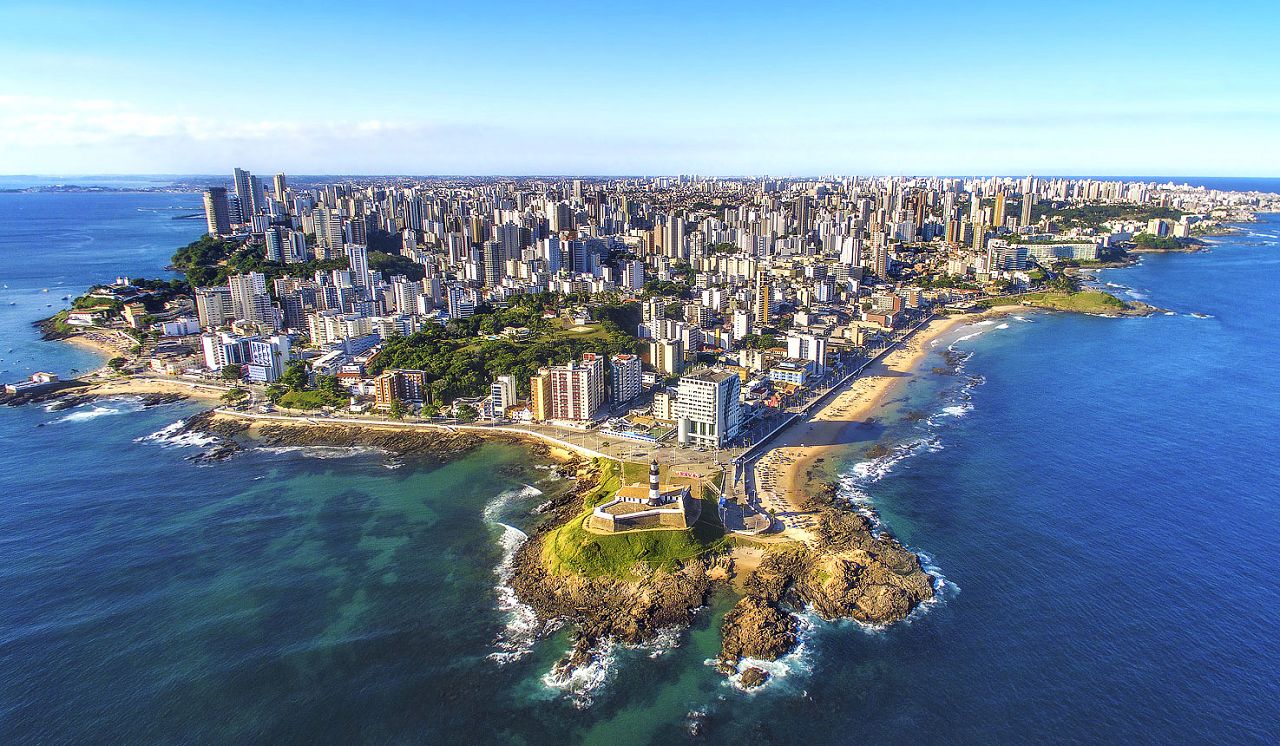
Gallery
Map
The best time to visit Salvador is generally considered to be during the Aug-Feb dry season.
The city is classified as having a tropical rainforest climate and has a distinctly different and more challenging climate than Rio de Janeiro. You really do need to enjoy tropical conditions.
There are two clearly defined seasons …
Aug-Feb : dry season
During the Aug-Feb dry season the daytime temperatures are relatively high at around 28C/82F, whilst the nighttime low temperatures hold up around 22C/72F. However the rainfall is less heavy, at around 125mm (5”) per month. Sunshine is around 7 hours per day (around 60% of daylight hours), meaning that there is usually at least some cloud around. High humidities mean that conditions often become uncomfortable or oppressive.
Mar-Jul : rainy season
During the Mar-Jul rainy season the daytime temperatures are marginally higher at around 30C/86F, whilst the nighttime low temperatures are even higher at around 24C/75F. The rainfall is very high, at around 300mm (12”) per month. Sunshine is around around 6 hours per day (around 55% of the slightly longer daylight hours), meaning that there is usually at least some cloud around. High humidities mean that conditions are usually uncomfortable or oppressive.
Despite the weather, this period is generally the most busy in Salvador and the time that the whole city seems to be out on the popular beaches.
It’s also the time when enormous cruise ships most commonly dock here and spill vast numbers of passengers onto the city’s attractions.
The famous Salvador Carnival takes place during February, so that’s a period that you really need to plan to either coincide with or avoid, depending on how much of a party person you are.
Getting there
Salvador is served by Deputado Luís Eduardo Magalhães International Airport (SSA), which has regular direct flight connections with both São Paulo and Rio de Janeiro.
However, there are rarely any direct flight connections to popular locations like Manaus, Pantanal and Iguacu Falls.
For this reason, the beach lodges along the Costa Bahia area tend to only feature in trips where guests specifically want to also include a stay in the city of Salvador itself. Otherwise it is more common to include beach lodges in the Buzios and Costa Verde areas closer to Rio de Janeiro.
Once in Salvador you will be met and transferred to your hotel. We do not recommend getting taxis or public transport whilst staying in the city or out on the beaches. If you are travelling out without a guide, then we recommend that you only use transport that is recommended by the hotel or other reliable people.
Where to stay
If you want to explore the city of Salvador itself then there is a cluster of interesting hotel options in the historic Pelourinho district to the west of the peninsular. There is one outstanding hotel in the area, Hotel Villa Bahia, which is a really stylish boutique option.
If you want to visit one of the beach lodges to the north or south of Salvador, then it is usual to connect by road transfer, either from the airport or from your hotel in the city. There’s a handful of reasonable options.
renowned for its particularly colourful carnival season
let us know your thoughts about Brazil
and we will help you create the perfect trip
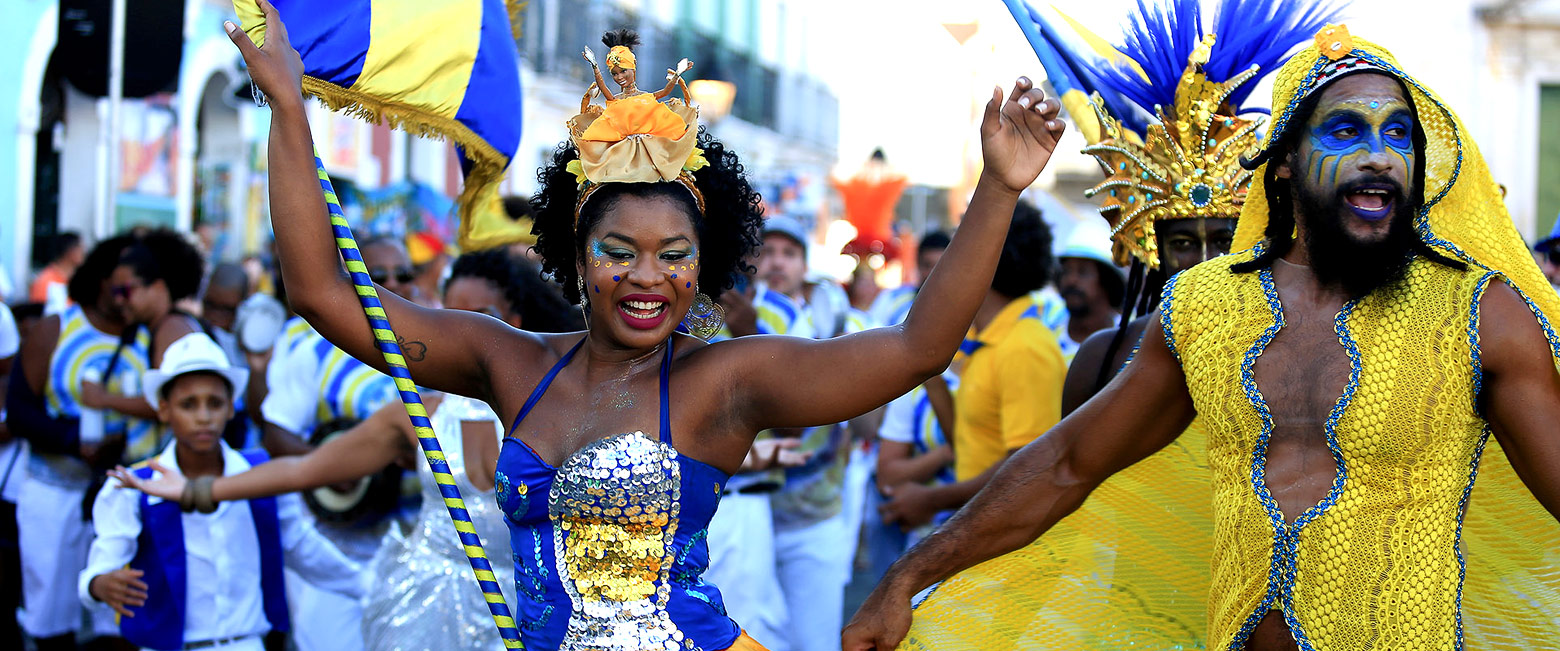
Extraordinary tailor-made adventures,
from earthy and edgy to easy and extravagant
From around USD 2500 per person, you set the ceiling
Sample Trips
Here are some of our popular trip shapes

Get started on your trip
It’s never too soon to get in touch, we are here to help with every stage of your planning.
Best Lodges
We regularly inspect and photograph all of the the best lodges, to ensure that we always recommend the most suitable options
Key Locations
Take a look around related locations. Click ‘View more’ to explore locations further afield.
Where Next?
Where Next?
We offer trips to dozens of fabulous countries.
Might one of these might be your next great adventure?

Please rotate your screen.











